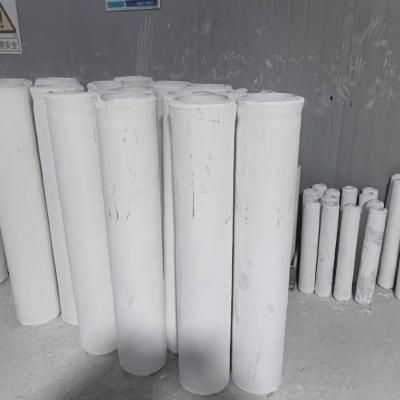
Precise ceramic reveal distinguished molecular essences, making them perfect for a broad array of functions. Developing from flight and motoring to electronics, these materials are incessantly enhancing to cope with the criteria of a innovative context.
- Their resilience and endurance to harsh climates make them paramount for superior equipment.
- Furthermore, technical ceramics provide edges in terms of efficiency, advancing the evolution of revolutionary apparatuses.
Fabricating Materials: Assembled for Exceptional Performance
Assembled ceramics stand out in taxing uses due to their unparalleled features. Made from chosen raw constituents and undergoing comprehensive processing methods, these next-generation composites exhibit unmatched sturdiness, abrasion resistance, and endurance to intense atmospheres, oxidation, and scratching. From aeronautics pieces to cutting tools, industrial ceramics offer unmatched effectiveness across various areas. Their adaptability allows withstanding inimical locales, assuring durability and trustworthiness. As advancement progresses, the requirement for state-of-the-art elements grows, cementing the central position of industrial ceramics in shaping a advanced prospect.
Next-Generation Ceramics: Breaking Substance Boundaries
Compositions, revealing outstanding hardness and durability, are experiencing a revolution. Innovative ceramics, created with refined control over their composition and minutiae, stretching the limits of what is achievable. These structures showcase a expansive assortment of qualities, rendering them preferable for challenging territories such as spacecraft, medical domain, and electricity. From slim parts that survive extreme climatic environments to compatible with living tissue implants that integrate seamlessly with the living system, advanced ceramics are altering our existence.
Detailed Ceramic Construction: Fulfilling Exacting Requisites
Engineered ceramic fabrication has matured decisively in recent years, facilitating the formulation of multi-dimensional and highly functional ceramic components. These pieces are crucial across a comprehensive range of arenas, including orbital, biomedical, and electrical domains. Addressing the demanding benchmarks for these operations calls for detailed fabrication procedures that warrant dimensional strictness, surface treatment, and material attributes. State-of-the-art ceramic fabrication processes incorporate diverse methods, including slip casting, injection molding, and additive manufacturing. These processes permit the production of multi-faceted patterns and exact characteristics with outstanding constancy. Besides, advances in substance science have yielded new ceramic compositions endowed with elevated traits. These ceramics maintain increased endurance, longevity, and tolerance to demanding temperature conditions, granting their use in exacting sectors.
The prospects for detailed ceramic fabrication are enormous. As inquiries and advancement go forward, we can anticipate even more cutting-edge tactics and elements that will also extend the limits of what is feasible in this domain.
Superior Ceramic Substances for Rugged Realms
Specialized ceramic composites maintain extraordinary robustness and endurance against challenging locales, making them optimal for stringent purposes in aviation territories. These modern ceramics can overcome extreme temperature loads, defy degradation, and preserve their robustness under demanding dynamic pressings. Their distinctive crystalline features equip steady output in inimical placements, including fireplaces, gas turbines, and energy generators.
- Ceramic matrix composites
- Heat resilience
- Mass reduction
Ceramic Hybrids: Merging Sturdiness and Capability
Hybrid ceramics showcase a potent mix of mechanical strength and distinct specialized traits. Through the amalgamation of ceramic units within a scaffold, these mixtures achieve impressive performance. This merge results in heightened immunity against high heat exposure, wearing, and chemical degradation, rendering them desirable for demanding uses in orbital, transportation, and power areas. Furthermore, ceramic composites can be designed to possess individual properties like electrical conductivity or biocompatibility, expanding their utility across diverse domains.
Microscopic Control in Advanced Ceramics
Securing intended features in high-tech ceramics usually involves detailed regulation over their architecture. A variety of fabrication aspects, including sintering firing temperature, duration, and atmosphere, alongside the embedding of dopants or secondary phases, notably change the arrangement of crystals, pore presence, and other microstructural elements. Detailed adaptation of these variables allows for the increase of resilience, cracking tolerance, and heat conductivity. For example, lifting the sintering heat intensity can boost grain inflation, thus increasing solidness and improving mechanical rigidity. Conversely, handling the firing atmosphere may shift the oxidation state of the ceramic, thereby influencing its electrical electric flow or magnetic attributes. Understanding these relationships between microstructure and properties is paramount for designing advanced ceramics with personalized quality suitable for numerous uses.
Decay-Resistant Ceramics: Strengthening Toughness
During challenging workshop domains, where modules are subjected to constant scraping and corrosion, substances with superior sturdiness are vitally necessary. Wear-resistant ceramics have come forth as a key solution, delivering unparalleled lastingness and functionality in wide-ranging covers such as production, mining, and aerospace. These advanced substances possess a rare grain layout that strengthens their aptitude to counteract scuffing. By employing the basic toughness and mass of ceramic materials, engineers can formulate robust modules capable of withstanding the most challenging operating locales.
Therapeutic Elements: Roles in Medicine
Health-safe ceramics have overhauled the health domain, providing an array of supportive benefits for various applications. These composites are chemically neutral within the organism, minimizing antibody responses and facilitating tissue integration. A prime task for biocompatible ceramics is in bone fixation devices, where their tenacity sustains long-lasting backing to damaged tissues.
Besides, they are utilized in dental prosthetics, providing a tough and aesthetically pleasing solution for dental implants. Ceramics also exercise a key function in medicine delivery, facilitating the specific transport of drugs to specific points within the flesh.
- Moreover, biocompatible ceramics are growingly being examined for biological scaffolding, serving as a framework for wound healing.
- Thus, the road ahead of biocompatible ceramics in health industry looks propitious, with continual research expanding their potential.
Advanced Ceramic Sensors: Supporting Consistent Evaluations
Sophisticated ceramic sensors have surfaced as vital modules across a diverse array ceramic nozzle of applications. These detectors exploit the individual essentials of ceramic elements to deliver highly reliable measurements. Their toughness in {demanding|harsh| 